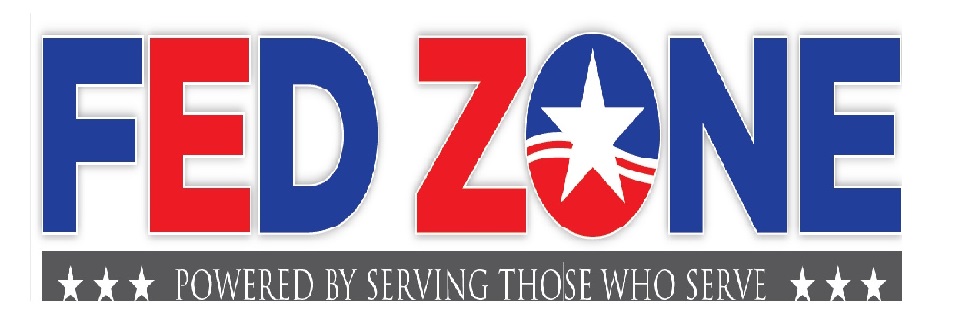Health Savings Accounts and Health Reimbursement Accounts Are a Tax-Efficient Way for Paying Medical Expenses

Edward A. Zurndorfer–
A health savings account (HSA) combines a high deductible health plan (HDHP) with a tax-favored savings account. The funds contributed to an HSA result in federal and state income tax savings. In fact, an HSA offers a trifecta tax benefit which includes:
- Tax deductible contributions. Contributions made to the HSA are 100 percent tax deductible, up to the IRS annual limit and similar to contributions made to a deductible traditional individual retirement arrangement (IRA). Also like a deductible traditional IRA contribution, a contribution to an HSA is reported on one’s income tax return as an adjustment to income (an “above-the-line” deduction). In other words, an individual does not have to itemize on his or her income tax return in order to get a tax benefit by contributing to his or her HSA. But unlike a deductible traditional IRA that some federal employees own and contribute to, there are no adjusted gross income (AGI) limitations for contributing to an HSA. Because permanent federal employees are covered by at least one pension plan – namely, a CSRS or FERS retirement – IRS rules restrict how much (if any) federal employees can contribute to a deductible traditional IRA.
- Tax-free distributions. Withdrawals from an HSA to pay for qualified medical, dental, vision or long-term care expenses are not taxed. This is unlike a deductible traditional IRA in which withdrawals are fully subject to federal and state income taxes.
- Tax-deferred earnings. HSAs accrue earnings which accumulate at least tax -deferred. The accrued earnings are withdrawn tax-free when the withdrawn HSA funds are used to pay for qualified medical, dental, vision or long-term care expenses.
Another valuable benefit associated with an HSA is that the HSA remains the property of the owner. Unlike a health care flexible spending account (HCFSA), unused money in an HSA is never forfeited. Withdrawals can be made tax-free to pay for qualified medical expenses, even when the owner is not covered by a HDHP. For example, the HSA owner uses HSA funds to pay for qualified medical expenses in retirement and enrolled in Medicare.
In order to contribute to an HSA, an individual must be enrolled in a HDHP. An HDHP also features higher out-of-pocket maximum limits compared to other types of health insurance plans. With an HDHP, the annual deductibles must be met before insurance plan benefits are paid for medical services other than in-network preventive care services which have 100 percent coverage before the deductible is met.
The Federal Employee Health Benefits (FEHB) program offers HDHPs to employees. The following employees are eligible to participate in a HSA – that is, contribute to an HSA – through their enrollment in a FEHB-sponsored HDHP: (1) Employees not enrolled in any part of Medicare – Medicare Part A, Part B, Part C or Part D; (2) employees not enrolled in another health insurance plan associated with a non-HDHP health insurance plan, either themselves or through a spouse; and (3) employees not claimed as a dependent on someone else’s Federal income tax return.
Note that being enrolled in a federal government-sponsored (through the Federal Employee Dental and Vision Insurance Program or FEDVIP) or private dental, vision or long-term care insurance plan will not disqualify an individual from participation in an HSA. But participation in one’s health care flexible spending account (HCFSA) or through a spouse’s HCFSA will disqualify an individual from contributing to an HSA.
The following is a list of FEHB program insurance plans offering HDHPs during 2020 for Federal employees:
List of Nationwide FEHB Program High Deductible Health Plans During 2021
Plan
Aetna (most states)
GEHA
MHBP – Consumer Option
An HSA is administered by a trustee or custodian, similar to an IRA. If the HSA owner dies, then a spousal beneficiary will inherit the HSA and use it as his or her own, making qualified withdrawals to pay for out-of-pocket medical, dental and vision expenses. Non-spousal beneficiaries of an HSA such as children must withdraw funds from the HSA and pay federal and state taxes on withdrawals but no early withdrawal penalty.
Each year, the IRS announces limits on contributions to HSAs, HDHP minimum deductibles, and maximum out-of-pocket spending amounts under HDHPs linked to HSAs. The following table summarizes the IRS limits for 2021:
Contribution and Out-of-Pocket Limits for Health Savings Accounts and High Deductible Health Plans for 2021
| HSA contribution limit (employer + employee) | Individual: $3,600 Family: $7,200 |
| HSA “catch-up” contributions (age 55 and up) | $1,000 |
| HDHP minimum deductibles | Individual: $1,400 Family: $2,800 |
| HDHP maximum out-of-pocket amounts (deductibles, co-payments, and other amounts, but not premiums) | Individual: $7,000 Family: $14,000 |
Penalties for Using HSA Withdrawals to Pay Nonqualified Expenses
Those HSA owners under the age of 65 (unless totally and permanently disabled) who make HSA withdrawals to pay for nonqualified medical expenses face a 20 percent penalty of the HSA funds withdrawn and used for such expenses. Funds spent for nonqualified purposes are also subject to federal and state income taxes.
Dependent Children
While the FEHB program allows employees to add their adult children (up to age 26) to their FEHB health plans, the IRS definition of a qualified dependent (as to which family member may be covered under an employee’s HSA) is different. This means, for example, a federal employee whose 25-year-old child is covered under his or her HSA-qualified FEHB HDHP may not be eligible to use HSA funds to pay for that child’s out-of-pocket medical, dental or vision expenses. The exception would be if the child is a full-time student and therefore a qualified dependent for federal income tax purposes.
In short, these are the steps for a federal employee to participate in an HSA in the FEHB program:
1. The employee enrolls in a HDHP associated with a health plan in the FEHP program.
2. The employee’s HDHP establishes an HSA with a fiduciary (each HDHP has more information on how this step works in the HDHP Plan Brochure).
3. The HDHP automatically contributes a portion of the employee’s FEHB premium into the employee’s HSA (the “premium pass-through”). A sample of the 2020 “premium pass through” amounts may be viewed here.
4. The employee can make additional contributions to their HSA up to the IRS’ annual maximum contribution limit, as shown above in the table under “HSA contribution limit (employer and employee)”
5. The HDHP will provide the employee or a member of the employee’s family preventive care without cost to the employee, subject to any limits outlined in the HDHP’s Plan Brochure.
6. The employee will pay the full cost of non-preventive care for the employee or for a member of the employee’s with funds from the HSA or out-of-pocket, up to the plan’s high deductible amount.
7. If an employee incurs out-of-pocket medical expenses that reach the HDHP’s maximum out-of-pocket limit, the employee’s HDHP will then cover needed care with no charge to the employee. This assumes the employee uses in-network providers.
Other key features of HSAs that employees should be aware of:
- Distributions from one’s HSA are tax-free to pay for the qualified medical expenses (as explained in IRS Publication 502 – Medical and Dental Expenses, and downloadable here.) for the employee, the employee’s spouse, and the employee’s tax dependents. This is true even if the spouse or tax dependents are not covered by a HDHP.
- HSA may allow the contributions to the HSA to grow at least tax-deferred over time, similar to a Roth IRA. This is true even if the HSA leaves or retires from Federal service.
- HSA owners are highly encouraged to shop around for an HSA custodian who will be most aggressive in investing the funds in the HSA, especially if the HSA owner is relatively young. Using very simplified assumptions, it is possible to calculate for today’s employees the future benefit of an HSA during the accumulation phase of an HSA. For example, assuming an hypothetical investment annualized return of 6 percent and if a 25 year old HSA owner rolls over half of the annual HSA contribution of ($1,800) from year to year (that is, funds are not withdrawn and spent on health care), his or her HSA could possibly grow to as much as $295,000 by the time he or she is age 65 and retired. At that time, the HSA owner could make HSA withdrawals income tax-free to pay for out-of-pocket medical (including Medicare Part B premiums), dental, vision, and long-term care (including long term care premiums) expenses. If he or she is age 65 or older, he or she can make HSA withdrawals to pay for nonmedical expenses but he or she must pay regular income tax with no penalty. In that way, the HSA is no different than a traditional IRA.
HDHPs with HSAs give employees greater control over how their healthcare dollars are spent, both out-of-pocket monies and with funds from their HSAs. As with most FEHB fee-for-service plans, HDHPs provide most cost-effective coverage when enrollees use network providers.
Health Reimbursement Arrangement (HRA)
If an employee selects an HSA-qualified high deductible health plan (HDHP) and is not eligible for an HSA, the employee will be given a Health Reimbursement Arrangement or HRA. A health reimbursement arrangement (HRA), sometimes mistakenly referred to as a health reimbursement account, is an IRS-approved, employer-funded, tax-advantaged health benefit used to reimburse employees for out-of-pocket medical expenses and personal health insurance premiums.
An HRA is not health insurance. Instead, employers offer employees a monthly allowance of tax-free money. Employees then buy the health care services they want, potentially including health insurance, and the employer reimburses them up to their allowance amount.
An HRA plan is an excellent way to provide health insurance benefits and allow employees to pay for a wide range of medical expenses not covered by insurance. It is an especially good option for small businesses that cannot afford to offer group health insurance, as the business can choose the amount of the allowance to offer its employees.
Features of an HRA include:
- Tax-free withdrawals for qualified medical expenses
- Carryover of unused credits, without limit, from year to year
- An employee/annuitant can have an HRA if the employee/annuitant is enrolled in Medicare or (an employee) is enrolled in a healthcare flexible spending account (HCFSA); however, credits in an HRA do not earn interest
- Credits in an HRA are forfeited if the employee/annuitant switches health plans, or if the employee leaves federal employment other than to retire
- An HRA is administered by the health plan
- An employee/annuitant cannot make voluntary contributions to the HR
You Might Also Enjoy This Podcast
Edward A. Zurndorfer is a CERTIFIED FINANCIAL PLANNER™ professional, Chartered Life Underwriter, Chartered Financial Consultant, Chartered Federal Employee Benefits Consultant, Certified Employees Benefits Specialist and IRS Enrolled Agent in Silver Spring, MD. Tax planning, Federal employee benefits, retirement and insurance consulting services offered through EZ Accounting and Financial Services, and EZ Federal Benefits Seminars, located at 833 Bromley Street – Suite A, Silver Spring, MD 20902-3019 and telephone number 301-681-1652. Raymond James is not affiliated with and does not endorse the opinions or services of Edward A. Zurndorfer or EZ Accounting and Financial Services. The information has been obtained from sources considered to be reliable, but we do not guarantee that the foregoing material is accurate or complete. While we are familiar with the tax provisions of the issues presented herein, as Financial Advisors of RJFS, we are not qualified to render advice on tax or legal matters. You should discuss tax or legal matters with the appropriate professional.

Paying Medical Expenses
